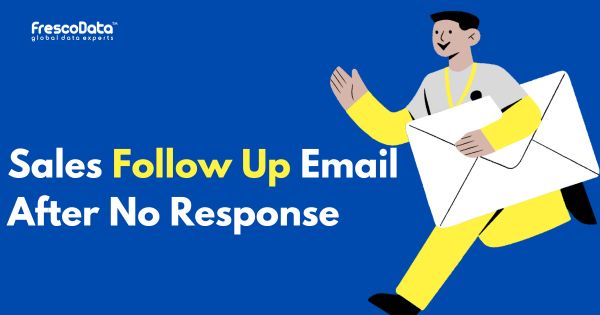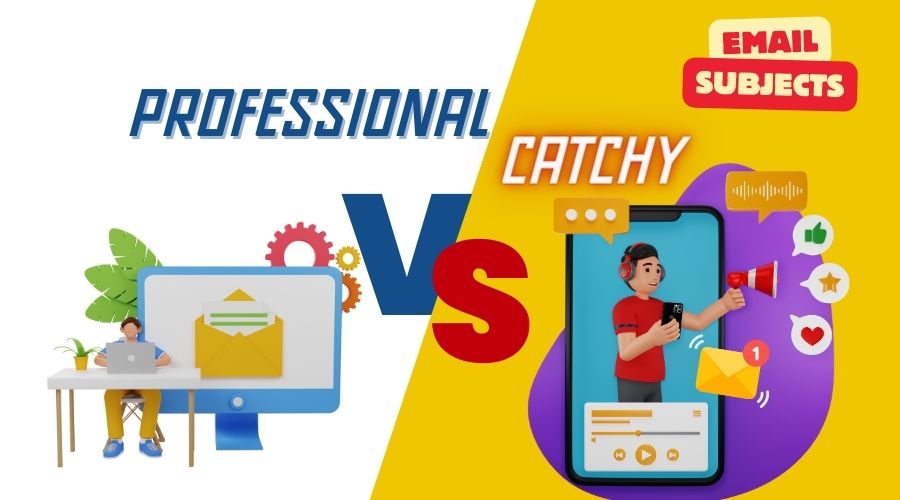Cold Email Marketing is Dead!
No, it is so NOT ❌
In fact, if done effectively, Cold Email Marketing can be your secret weapon for unlocking untapped opportunities.
But you need to make sure that you’re avoiding these cold email marketing mistakes; instead, you’re crafting tailored, irresistible emails that speak directly to your prospects’ needs and interests.
Then only will it reap benefits & help you expand your reach, nurture leads, and drive conversions.
In this guide, we’ll discover how you can get the Most Out Of It. 🙂
But before we dive in, here’s a brief overview of Cold Email Marketing. (for those who don’t know)
What is Cold Email Marketing?

Cold email marketing, in simple terms, is when a business sends unsolicited emails to its target audience.
Unlike warm email marketing, where recipients have already engaged with the business, cold email marketing involves sending unsolicited emails to individuals or companies to attain the goal.
It typically involves crafting personalized and targeted emails sent to a list of prospects. These emails often introduce the sender and their company, highlight the benefits of their products or services, and encourage recipients to take the desired action.
When done effectively, cold email marketing can be a valuable tool for businesses at their disposal to broaden their reach, generate leads or increase sales. However, it requires careful planning, targeting, and personalized messaging to avoid being perceived as spam and to achieve the desired results.
Now, not all email campaigns are created alike; various factors, such as your objectives, KPIs, industry nuances, etc., play pivotal roles in shaping the most effective strategy. However, amidst this diversity, there are foundational principles that remain universal.
Let’s delve into those core fundamentals.
Your Roadmap To Cold Email Marketing
Before starting off with cold email marketing, you must ensure that everything is in place & you are set in the right direction to get the most out of it.
Define Your Goals
Start by clarifying your goals & KPIs for the cold email marketing campaign. Whether generating leads, driving sales, or building brand awareness, having clear goals will shape your strategy.
It will help you guide your strategy toward your goal.
For instance, If your goal is branding, you would focus on educating recipients about your brand by sharing informative resources that show your expertise and establish your brand as a thought leader in your industry.
Whereas, If your goal is to drive sales, you will highlight product features, discounts, or limited-time deals & offers to create a sense of urgency and incentivize purchases. You might also include customer testimonials or case studies to build trust and credibility with recipients.
Additionally, you may personalize your emails based on recipients’ past interactions or preferences to increase relevance and engagement.
Find Perfect Leads
You can buy targeted opt-in email lists for your cold email marketing campaign from a reliable data provider like FrescoData.
All you need to do is reach out to our experts & elaborate on your needs & they’ll provide you with a list of your target audience along with additional information about your leads, which will help you to personalize your cold email outreach around their pain points.
By working with a reputable data provider like FrescoData, you can also ensure that your email lists are accurate, up-to-date, and compliant with relevant regulations. It can improve the deliverability and effectiveness of your cold email marketing efforts, ultimately leading to better results and a higher ROI.
Creative Size
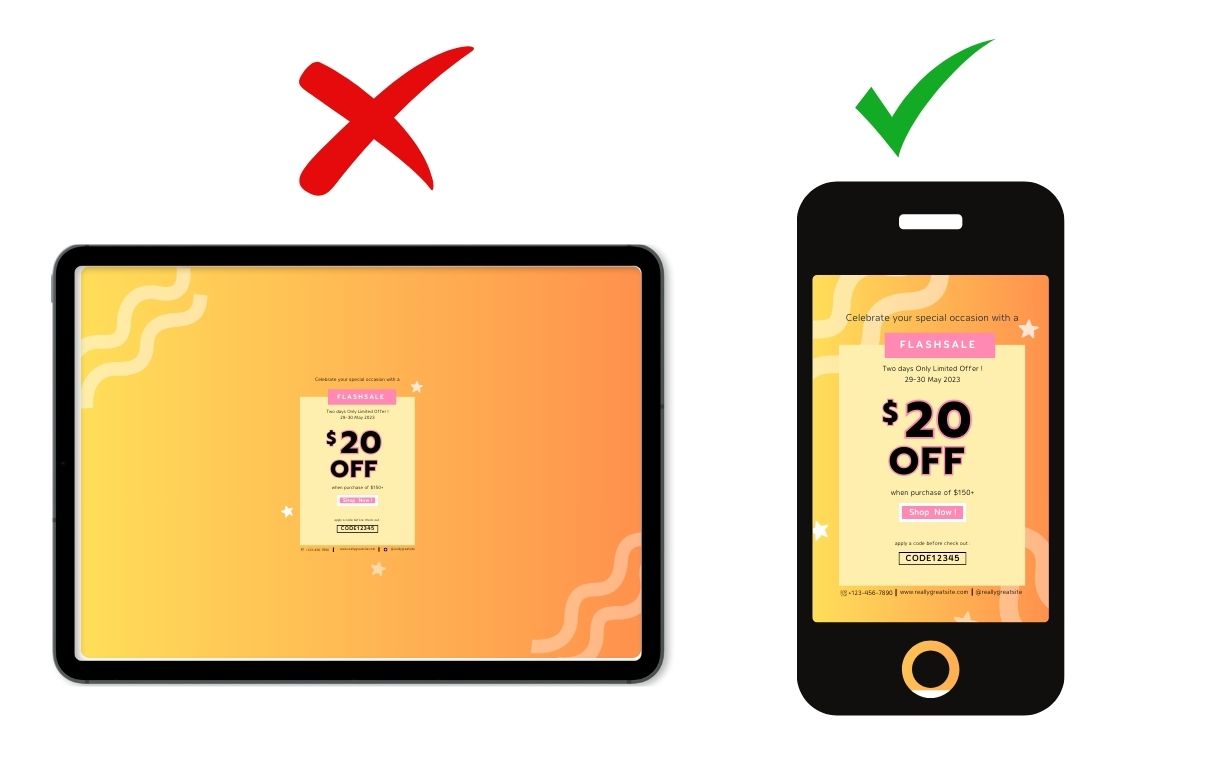
The standard creative size for cold email marketing templates can vary based on the layout and design preferences of the sender, as well as the email platform being used.
The key is creating cold email templates that are appealing to your target audience, easy to read, and optimized for desktop and mobile users.
Experiment with different layouts, designs, and content formats to find what works best for your audience and objectives.
However, there are some common recommendations and best practices to consider:
📩 Aim for a width between 600 to 800 pixels for desktop users. It ensures that your email content remains easily readable without requiring horizontal scrolling.
📩 For mobile responsiveness, consider using a responsive design that adjusts the layout and font sizes to fit smaller screens. Most cold email marketing platforms offer responsive templates that automatically adjust for mobile devices.
📩 There is no strict limit on the height of a cold email template, but it’s generally recommended to keep the content concise and avoid excessive scrolling. Aim to communicate your message effectively within the first screen view to capture the recipient’s attention.
📩 Maintain a balanced aspect ratio to ensure images and text display properly across different devices. Avoid using excessively tall or wide images that may get cropped or distorted.
📩 Keep the total file size of your email template reasonable to ensure fast loading times. Aim to keep images optimized for the web and compress any large files.
📩 Ensure your CTA button is prominently placed within the email template and easily clickable on desktop and mobile devices. Recommended sizes for CTA buttons vary but typically range from around 30 to 50 pixels in height.
📩 Test your email templates across different devices & screen sizes to ensure responsiveness. Make adjustments as needed to optimize the user experience for all recipients.
Standard Time
The standard time to send emails varies based on various factors such as demographics, industry, etc. However, there are some general guidelines and best practices to consider when scheduling emails:
Weekdays vs. Weekends
- Weekdays (Tuesday to Thursday): Many studies suggest that Tuesday, Wednesday, and Thursday are the most optimal days for sending emails, as people are typically more focused and engaged with work-related tasks during these days.
- Weekends: While open rates may be lower on weekends, sending emails on Saturdays or Sundays can sometimes result in higher engagement for specific audiences, such as hobbyists or consumers with more leisure time.
Time of Day
Mid-Morning (9-11 AM): It is often considered a prime time for sending emails, as people have settled into their workday and check their emails after handling urgent tasks.
Afternoon (1-3 PM): Sending emails in the early afternoon can catch recipients during their post-lunch break when they may be more receptive to reading and responding to emails.
Early Evening (5-7 PM): Some studies suggest that sending emails later in the day, closer to the end of the workday, can lead to higher open and click-through rates as people wrap up their tasks and check their emails before heading home.
Avoiding Peak Times
Monday Mornings: Mondays tend to be hectic for most people, with overflowing inboxes from emails received over the weekend. Avoid sending emails first thing on Monday morning when recipients are likely prioritizing urgent tasks.
Late Night: Sending emails late at night or in the early hours of the morning may result in lower engagement, as recipients may be asleep or less likely to check their emails outside of regular business hours.
Time Zone Considerations
If your target audience spans multiple time zones, segment the list based on geography & accordingly shoot emails based on the recipient’s local time.
Testing and Optimization
Ultimately, the best time to send emails can vary depending on your specific audience and objectives. It’s essential to conduct A/B testing and analyze performance metrics to determine the optimal send times for your cold email marketing campaigns.
Beware of the Spam Folder
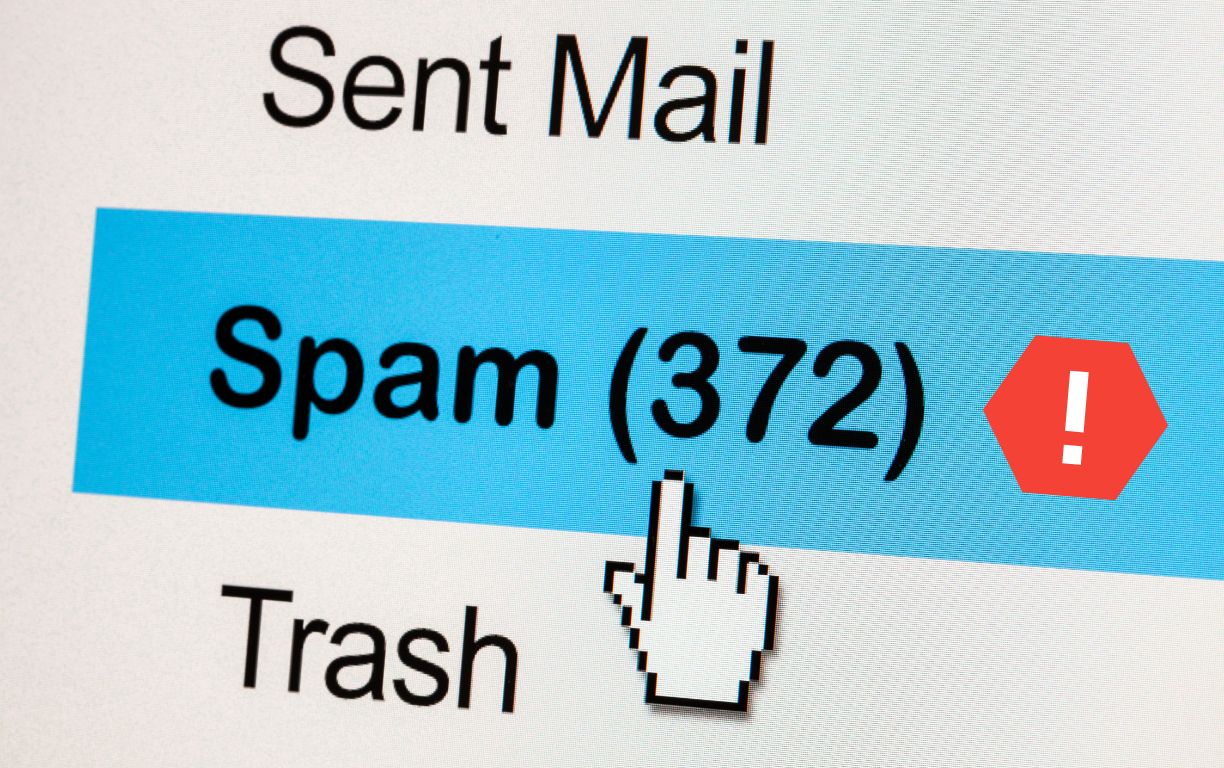
Use a Trusted Email Service Provider (ESP)
Choose a reputable ESP with a good track record of maintaining a good sender reputation and delivering emails reliably.
Domain Authentication
Implement email authentication protocols such as:
SPF
Sender Policy Framework (SPF) is an email authentication protocol used to verify the authenticity of an email sender’s domain. By verifying the sender and recipient’s DNS records, SPF helps prevent email spoofing and phishing attacks.
DKIM
Domain Keys Identified Mail (DKIM) is another email authentication protocol designed to verify the authenticity and integrity of email messages.
It works by adding an encrypted digital signature to the header of outgoing emails, which the recipient’s mail server can validate to confirm that the message originated from the specified domain and has not been altered in transit.
DMARC
It is an email authentication protocol based on SPF and DKIM that provides enhanced protection against email spoofing and phishing attacks. It enables webmasters to specify email management policies if they fail SPF or DKIM authentication checks.
Verifying Emails Before Sending
Verifying your email lists before sending out email blasts is imperative to ensure that your messages reach the right inboxes and comply with anti-spam regulations.
By verifying your email lists, you can:
- Remove invalid or outdated addresses, minimize bounce rates, and improve your sender reputation. It increases deliverability and enhances the overall effectiveness of your cold email marketing campaign.
- Maintain a clean and engaged subscriber base, leading to higher open and click-through rates, better engagement with your audience, and improved ROI on your cold email marketing efforts.
Allow them to Opt Out (if they want to)

Give your users an option to unsubscribe, as respecting subscriber preferences helps maintain a positive sender reputation and fosters trust with your audience.
Avoid Spam Triggers
Craft your emails carefully to avoid triggering spam filters. It includes avoiding spammy words and phrases (such as buy now, purchase, etc.), using a balanced text-to-image ratio, and avoiding excessive use of symbols or punctuation marks.
Email Account Warm-Up
Email account warm-up is the process of gradually increasing the volume and frequency of outgoing emails from a new or inactive email account to establish a positive reputation.
Here’s how to warm up an email account effectively:
- Start Slowly: Begin by sending a small volume of emails to a highly engaged and receptive audience. It could include existing customers, subscribers who have recently opted in to receive emails or contacts who have interacted with your brand in the past.
- Gradually Increase Volume: Over time, gradually increase the number of emails you send while closely monitoring your deliverability metrics. Aim to increase your sending volume by 10-20 % each day or week, depending on your circumstances.
Monitor Deliverability Metrics
Monitor essential deliverability metrics such as bounce rates, spam complaints, and inbox placement rates. If you notice any signs of deliverability issues, such as a sudden increase in bounces or complaints, pause or reduce your sending volume, investigate the cause.
Respect Privacy and Regulations
Governments, industry organizations, and email service providers establish specific rules and guidelines to govern email communication and protect users from spam.
To avoid the spam folder & increase your deliverability rate, you must ensure that you comply with the regulations of the country/ies your target audience resides in.
Here are some key policies and regulations around cold email marketing:
- CAN-SPAM Act: It is a United States law that sets rules for commercial email messages. It requires senders to include accurate header information, provide recipients with a clear way to opt out of receiving future emails, and honor opt-out requests promptly. Violations of the CAN-SPAM Act can result in penalties and fines.
- GDPR: It is a European Union regulation that governs the processing of personal data and protects the privacy rights of individuals. It says that businesses must obtain explicit consent from individuals before sending them cold emails, provide clear and transparent information about how their data will be used, and give recipients the right to access, rectify, or delete their data.
- CASL: The Canadian Anti-Spam Legislation (CASL) is a law that regulates commercial electronic messages (CEMs) sent to Canadian recipients. CASL requires senders to obtain consent from recipients before sending them CEMs, including identifying information about the sender and providing a clear way for recipients to unsubscribe from future emails.
- Industry-Specific Regulations: Certain industries may have specific regulations or guidelines governing the use of email communication. For example, healthcare organizations must comply with the HIPAA Act, which sets rules for the privacy & security of protected health information transmitted via email.
Writing Cold Emails That Get Replies
Though cold emails are unsolicited, how you draft them can drastically affect the open rates & click-through rates.
Let’s see how!
The Subject Line
Always
- Highlight the value proposition or benefit of opening the email to entice recipients to click.
- Experiment with different subject lines and analyze performance to identify what resonates best with your audience.
- Make it Succinct
Try
- Dynamic personalization tokens, such as the recipient’s name or company, can make the subject line more personalized.
- Creating a sense of urgency or scarcity by mentioning limited-time offers or opportunities.
- Incorporating social proof, such as testimonials & success stories, to build credibility and trust.
- Asking a question related to the recipient’s needs or pain points around the topic to encourage engagement and curiosity.
Never
- Make unrealistic or exaggerated claims in your subject lines that could lead to disappointment or distrust.
- Be Vague or Ambiguous
Avoid
- Using spam words that could trigger spam filters and decrease deliverability.
- Using generic greetings like “Hi” or “Hello” in your subject lines. {Instead, personalize the subject line with the recipient’s name or company.}
- Using the same subject lines repeatedly, as it can lead to fatigue and decreased engagement from recipients.
- Using all capital letters or unnecessary use of punctuation in your subject lines, as they can come across as aggressive or spammy.
What are some good examples of cold email subject lines?
- “Ideas for [Recipient’s Company or Project]”
- “Exclusive Offer for [Recipient’s Company]—Limited Time!”
- “A Solution for [Recipient’s Challenge]”
- “Invitation to Collaborate on [Project or Initiative]”
- Discover Our Best Sellers at Unbeatable Prices
- Score Big Savings on Your Favorite Brands
- “Unlock VIP Access: Special Discounts Await You”
Want to Learn More?
Here are 81+ Email Subject Lines That Increases Clicks
Intro
Once you have enticed the user to open your email, you have a short span of time to pique their interest and satisfy their curiosity.
- Establish Relevance: Immediately establish relevance by mentioning something specific about the recipient or their company that caught your attention. It could be a recent achievement, project, or mutual connection.
- Be Concise: Keep your introduction to the point. Avoid lengthy paragraphs or unnecessary details that could overwhelm the recipient or detract from the main message.
- Build Rapport: Show genuine interest in the recipient and their interests or challenges. Use a friendly & conversational tone to establish rapport and make the recipient feel comfortable.
- Set Expectations: Provide a brief overview of what the recipient can expect from the email, whether it’s information about your product, a webinar invitation, or a free consultation.
- Don’t be Too Salesy: Avoid being too “salesy” in the intro itself, as it may deter the recipient from further engaging with your email. Instead, try to establish a genuine connection and provide value upfront to keep their interest intact.
Personalization
A personalized email garners more attention than a generic one as it resonates with your audience and drives better results.
So, you should aim to customize your emails to the individual recipient to make them feel more relevant and engaging.
Here’s what you can do to achieve that…
- Use the Recipient’s Name: Address the recipient by their first name in the email greeting. This simple touch can make the email feel more personalized and less generic.
- Reference Previous Interactions or Connections: If you have any previous interactions with the recipient or mutual connections, mention them in the email to establish rapport and build trust.
- Segment Your Email Lists: Segment your email lists by demographics, interests or behavior. It helps you send personalized and relevant emails to various segments of your audience.
- Tailor the Message to the Recipient’s Needs or Pain Points: Research the recipient’s industry, role, or challenges and tailor your email message to address their specific needs or pain points. Show that you understand their situation and offer a relevant solution.
- Offer Personalized Recommendations or Suggestions: Based on the recipient’s past purchases or browsing history, offer personalized product recommendations or suggestions that align with their interests or preferences.
- Send Triggered Emails Based on User Behavior: Send automated email campaigns triggered based on specific user actions or behaviors, such as abandoned carts or post-purchase follow-ups.
- Use Personalized Subject Lines: Craft subject lines that include the recipient’s name or reference their specific interests or needs to increase open rates and engagement.
- Follow-Up Based on Engagement: Tailor your follow-up emails based on the recipient’s engagement with previous emails. For example, send a follow-up email with additional information or a special offer to recipients who have opened your initial email but haven’t responded.
Signature
The signature in a cold email should be professional and include essential contact information to make it easy for the recipient to respond or reach out.
Here’s what to include in an email signature:
- Name: Start with your full name to identify yourself clearly to the recipient.
- Position or Title: Include your job title or position within your company to provide context about your role and authority.
- Company Name: Mention the name of your company or organization to reinforce your credibility and affiliation.
- Contact Information: Offer multiple to the recipient to contact you, including:
- Email Address: Use the same email address you’re sending the email from or a professional business email address.
- Phone Number: Include a direct phone number where the recipient can reach you or leave a voicemail.
- Website: Optionally, include a link to your company website for additional information.
- Social Media Links (Optional): If relevant to your communication style or industry, you may include links to your professional social media profiles (e.g., LinkedIn, Twitter) to establish credibility further and facilitate connection.
- Disclaimers or Legal Information (If Applicable): Depending on your industry or company policies, you may need to include disclaimers or legal information in your email signature. It could consist of confidentiality notices, privacy policies, or regulatory compliance statements.
Here’s an example of a professional email signature 😛
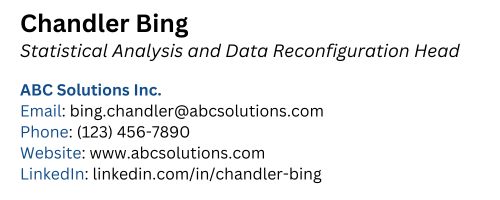
CTA
The call to action (CTA) in a cold email should be clear, compelling, and easy for the recipient to act upon.
Here are some tips for crafting a compelling CTA:
Be Clear and Direct
Clearly state the action you want the recipient to take, whether it’s scheduling a call, visiting your website, downloading a resource, or replying to the email. Use concise and action-evoking language to make it easy for them to understand what you want them to do.
Create Urgency (If Appropriate)
If there’s a time-sensitive offer or deadline associated with your CTA, communicate it to the recipient to create a sense of urgency and encourage immediate action. Phrases like “Limited Time Offer” or “Act Now” can help motivate recipients to respond promptly.
Highlight Benefits
Reinforce the value proposition of your CTA by highlighting the benefits or rewards the recipient will receive by taking action. Focus on what’s in it for them and how they stand to benefit from responding to your email.
Use Actionable Language
Use action verbs that prompt the recipient to take action, such as “Download,” “Register,” “Explore,” “Learn More,” or “Get Started.” Avoid passive language that may dilute the impact of your CTA.
Make it Stand Out
Format your CTA to make it visually stand out. Use a different font size, color, or style to draw attention to the CTA and make it easy for the recipient to spot.
Provide Multiple Contact Options
Give them multiple options for the recipient to respond to your CTA, such as clicking the CTA, replying to the email, or calling a phone number. It gives recipients flexibility and ensures that they can choose the method that’s most convenient for them.
Optimize for Mobile
Ensure that your CTA is easy to click on and interact with on mobile devices. Use buttons or hyperlinks with sufficient space around them to accommodate touchscreen navigation.
Test and Iterate
Experiment with different CTAs and analyze performance metrics to see which ones resonate best with your audience. Test variations in wording, placement, and design to optimize the effectiveness of your CTAs over time.
CTA Placement
Effective CTA placement in cold emails is essential for prompting recipient action.
You can try placing multiple CTAs throughout longer emails to maintain engagement.
Primary CTAs should be positioned above the fold to ensure visibility without scrolling and maximize engagement.
Add CTAs subtly in the introductory section to prompt immediate engagement, while main CTAs strategically follow value provision in the email body.
A final CTA in the closing section reinforces the desired action.
Utilize whitespace and visual hierarchy to draw attention to CTAs, guiding recipients toward action and achieving cold email marketing objectives.
Here’s an example of a clear and compelling CTA:
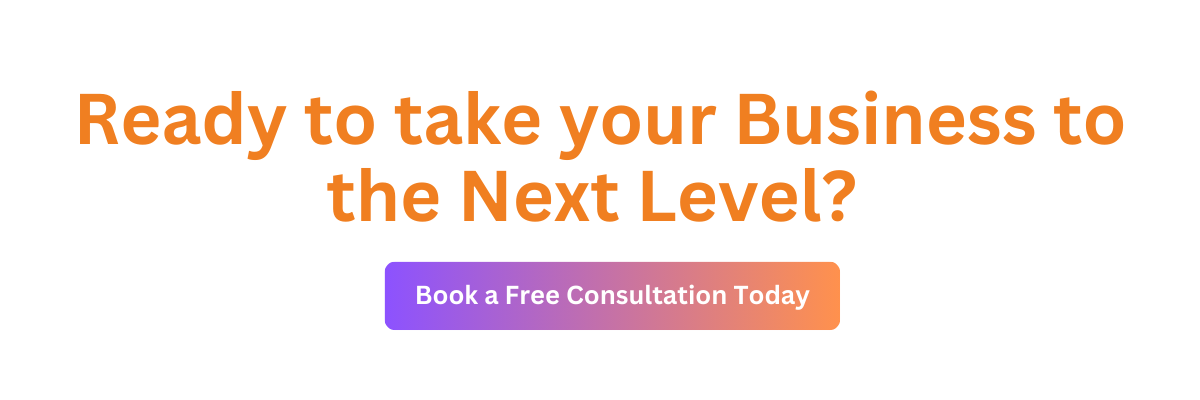
In this example, the CTA is clear (schedule a free consultation), highlights the benefit (taking your business to the next level), and creates urgency (today).
5 Best Cold Email Templates For Different Use Cases
Use Case 1: B2B Sales Pitch
Subject: Find 10,000s of leads in 2 minutes!
You should check out the NEW DEAL!!!
Use code COD10 at checkout for an additional 15% OFF your next order!
Results speak louder than claims, so hear from those who’ve already seen substantial business growth from using our platform.
Here are some reviews and case studies from our users (Add testimonials here)
AVAIL THE OFFER
Use Case 2: Webinar Invitation
Subject Exclusive Invitation: [Webinar Title] – Unlock the Secrets to [Topic]
Hi [Recipient’s Name],
I hope this email finds you well.
I’m reaching out to give an exclusive invitation to our upcoming webinar, “[Webinar Title].” We’ve designed this webinar specifically with professionals like you in mind, and it will provide valuable insights into [Topic].
Here are the details:
- Title: [Webinar Title]
- Date: [Date]
- Time: [Time] [Timezone]
- Duration: Approximately [Duration]
- Hosts: [Host Names/Organizations]
- Description: [Brief Description of Webinar Content and Benefits]
During this session, we’ll delve into [Key Points/Topics Covered] and share actionable strategies that you can implement immediately to [Benefit or Outcome]. Whether you’re looking to [Specific Objective or Goal] or simply eager to stay ahead in [Industry/Field], this webinar is tailored to meet your needs.
To book your spot, click on [Registration Link] and fill out a quick registration form. Space is limited, so please secure your place as soon as possible.
If you have any questions or need further information, feel free to reach out to me directly at [Your Contact Information].
Best regards,
[Your Name]
[Your Position]
[Your Company]
[Your Contact Information]
Use Case 3: Ecommerce Sales Pitch


Use Case 4: Link Building
Subject Exclusive Resource: [Topic] Guide for Your Audience
Hi [Recipient’s Name],
I’m (your name), a (your position) at (your co. name).
I just read your post on [topic] and really enjoyed it. You did a great job of covering the latest developments and best practices in the industry.
I especially liked your point about [mention the point] and how it’s changing the way [specific benefit]
In fact, I recently published a guide on [a topic related to a point mentioned in their blog/article but not their target keyword]. And it’d be a great addition to your post.
Here are a few key highlights of our resource:
- [Key Insight or Tip 1]
- [Key Insight or Tip 2]
- [Key Insight or Tip 3]
It would be a valuable addition for your readers and, thus, will be a valuable addition to your post.
Additionally, featuring our guide will enhance your website’s authority and credibility, further solidifying your position as a trusted source of valuable information in your niche.
To preview the guide and see if it resonates with your audience, I’ve attached a copy for your review. If you find it valuable and would like to publish it on your website, we would be thrilled to collaborate with you.
We’re open to discussing any modifications or customizations to better align the content with your audience’s preferences and your website’s style and tone.
Let me know your thoughts on this!
[Attachment]
Best regards,
[Your Name]
[Your Position]
[Your Company]
[Your Contact Information]
Use Case 5: Gaming App Promotion
Subject: Level Up Your Gaming Experience with [Your Gaming App Name]
Hi [Recipient’s Name],
Be ready to embark upon an epic gaming adventure unlike any other! Introducing [Your Gaming App Name], the ultimate destination for gamers looking to experience thrills, challenges, and excitement like never before.
Our [Gaming App Name] creates immersive gaming experiences that push the boundaries of fun and excitement. With [Your Gaming App Name], we’ve crafted a world-class gaming platform designed to cater to every gamer’s wildest dreams.
Here’s why you’ll love [Your Gaming App Name]:
- Vast Selection of Games: Dive into a treasure trove of games spanning multiple genres, from action-packed adventures to brain-teasing quizzes and everything in between. With new titles added regularly, there’s always something new to discover and explore.
- Social Gaming Features: Connect with friends and fellow gamers from around the world through our social gaming features. Whether you’re teaming up for cooperative missions or competing head-to-head in thrilling tournaments, the fun never stops with [Your Gaming App Name].
- Immersive Gameplay: Immerse yourself in stunning graphics, realistic sound effects & smooth gameplay that takes you to another world. With [Your Gaming App Name], you’ll feel like you’re right in the heart of the action, no matter where you are.
- Rewards and Incentives: Earn rewards, unlock achievements, and climb the leaderboards to prove your skills and prowess. With our rewarding loyalty program, the more you play, the more you’ll be rewarded!
But that’s not all! To celebrate the launch of [Your Gaming App Name], we’re offering an exclusive limited-time promotion. Download [Your Gaming App Name] now and receive [Special Offer or Bonus], available only to our early adopters.
Ready to level up your gaming experience? Download [Your Gaming App Name] now on [App Store/Google Play Store] and start your journey to gaming greatness today!
If you have any questions or feedback, our team is here to help. Reply to this email or reach out to us at [Your Contact Information].
Thank you for choosing [Your Gaming App Name] – where the adventure never ends, and the fun never stops!
Best regards,
[Your Name]
[Your Position]
[Your Company]
[Your Contact Information]
Sending Cold Emails In Bulk
When sending cold emails in bulk, it’s crucial to consider several factors to maximize deliverability and engagement. Here are some key points to keep in mind:
Send a Test Campaign: Before launching a large-scale cold email marketing campaign, send a test campaign to a small segment of your email list to ensure that everything is working correctly. Monitor deliverability, open rates, and engagement metrics to identify any issues that need to be addressed.
Use Standard Creative Size: Ensure that your email creative follows standard size guidelines to avoid formatting issues and ensure compatibility across different email clients and devices.
Use Authorized Domains: Send emails from authorized domains that have a good reputation for improving deliverability and reducing the probability of your emails being labeled as spam.
Keep Alternate Domains: Have alternate domains ready in case your primary domain gets flagged for spam. It allows you to continue sending emails without interruption and maintain communication with your prospects.
Send Emails to ‘Delivered Status’: Only send emails to contacts with a ‘Delivered’ status to avoid bouncing emails and damaging your sender’s reputation. Regularly clean your email list to remove invalid or inactive contacts.
A/B Testing: Test different elements of your cold email marketing campaigns, such as subject lines, email copy, CTAs, and send times, to optimize performance and improve results.
Segregate Them into Tiers: Segregate your email list into tiers based on various criteria, such as demographics, behavior, engagement level, lifecycle stage, domain reputation, and engagement history (if any) to prioritize sending to high-quality contacts first. When sending emails in bulk, limit the number of domains you contact per batch to prevent triggering spam filters.
Dynamic Content Insertion: Personalize your emails using dynamic content insertion to tailor the message to each recipient based on their preferences, behavior, or demographic information. It increases relevance and engagement, leading to higher conversion rates.
FAQs
Is it legal to send cold emails?
Yes, it is legal to send cold emails as long as you comply with relevant laws and regulations, such as the CAN-SPAM Act in the United States and the GDPR in the European Union.
It means including a clear and conspicuous unsubscribe link, providing accurate sender information, not using deceptive subject lines, and honoring opt-out requests promptly.
How to Follow Up on a Cold Email Marketing Campaign?
Following up on a cold email marketing campaign is essential for maintaining momentum and increasing the chances of a response.
When following up, be polite and persistent, and provide additional value or information that may encourage the recipient to respond.
You can reference your previous email, mention any new developments or insights, and reiterate the benefits of your offer.
Consider sending a series of follow-up emails over a period of time, spacing them out strategically to avoid overwhelming the recipient.
Does cold email marketing still work?
Cold email marketing can still be effective when done the right way.
Success in cold email marketing often depends on various factors, such as the quality of your email list, relevance and personalization of your messaging, the timing and frequency of your emails, and your ability to provide value to recipients.
Keep testing and refining your cold email marketing campaigns based on open rates, CTR, and conversion rates.
Cold email marketing may require more effort and careful planning than other marketing strategies, but it can help reach new prospects and generate business opportunities.
Is cold email marketing illegal in the UK?
No, cold email marketing is not illegal in the UK. Still, it must comply with relevant laws and regulations, particularly the GDPR & PECR.


